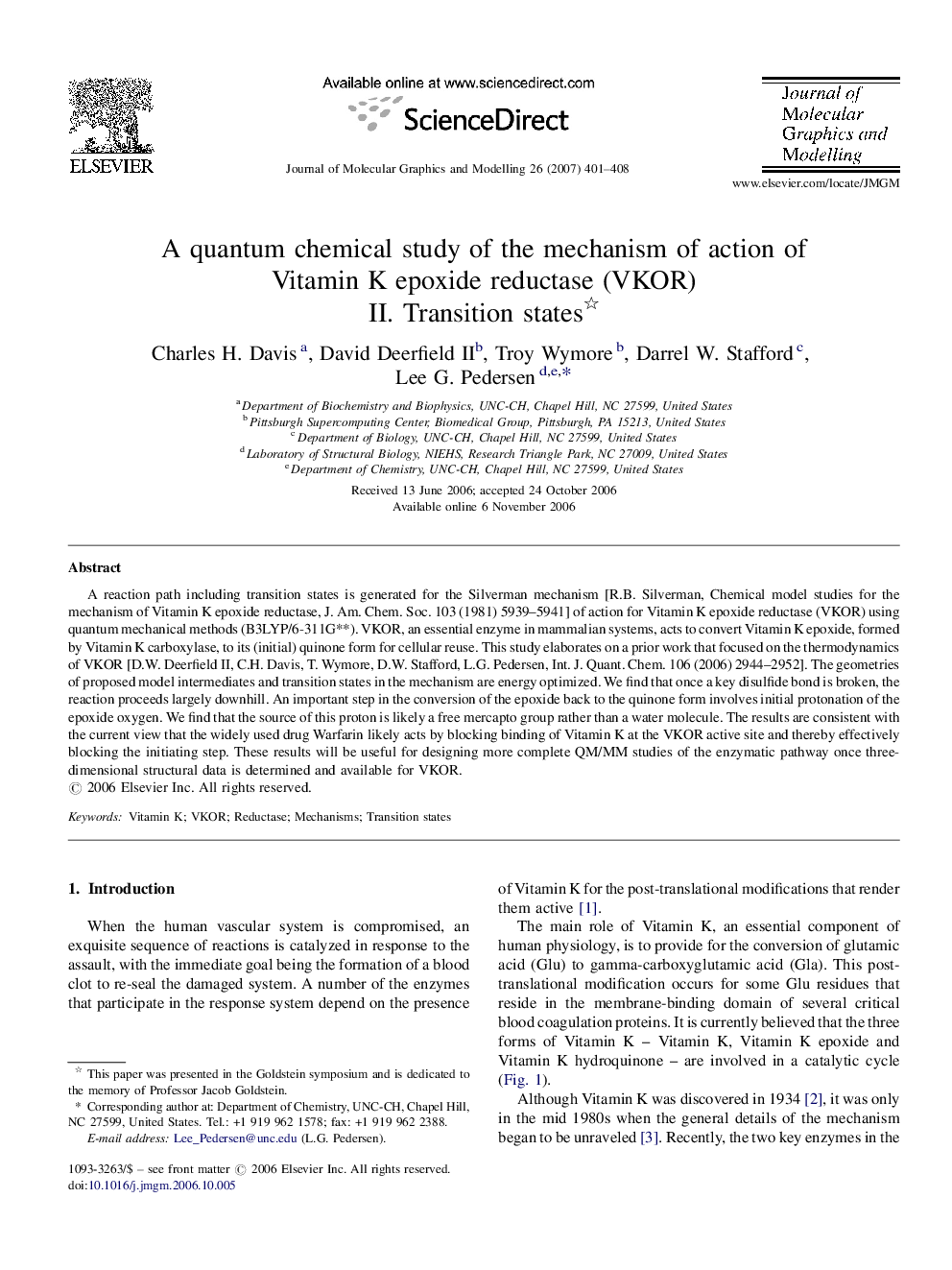| Article ID | Journal | Published Year | Pages | File Type |
|---|---|---|---|---|
| 443701 | Journal of Molecular Graphics and Modelling | 2007 | 8 Pages |
A reaction path including transition states is generated for the Silverman mechanism [R.B. Silverman, Chemical model studies for the mechanism of Vitamin K epoxide reductase, J. Am. Chem. Soc. 103 (1981) 5939–5941] of action for Vitamin K epoxide reductase (VKOR) using quantum mechanical methods (B3LYP/6-311G**). VKOR, an essential enzyme in mammalian systems, acts to convert Vitamin K epoxide, formed by Vitamin K carboxylase, to its (initial) quinone form for cellular reuse. This study elaborates on a prior work that focused on the thermodynamics of VKOR [D.W. Deerfield II, C.H. Davis, T. Wymore, D.W. Stafford, L.G. Pedersen, Int. J. Quant. Chem. 106 (2006) 2944–2952]. The geometries of proposed model intermediates and transition states in the mechanism are energy optimized. We find that once a key disulfide bond is broken, the reaction proceeds largely downhill. An important step in the conversion of the epoxide back to the quinone form involves initial protonation of the epoxide oxygen. We find that the source of this proton is likely a free mercapto group rather than a water molecule. The results are consistent with the current view that the widely used drug Warfarin likely acts by blocking binding of Vitamin K at the VKOR active site and thereby effectively blocking the initiating step. These results will be useful for designing more complete QM/MM studies of the enzymatic pathway once three-dimensional structural data is determined and available for VKOR.
